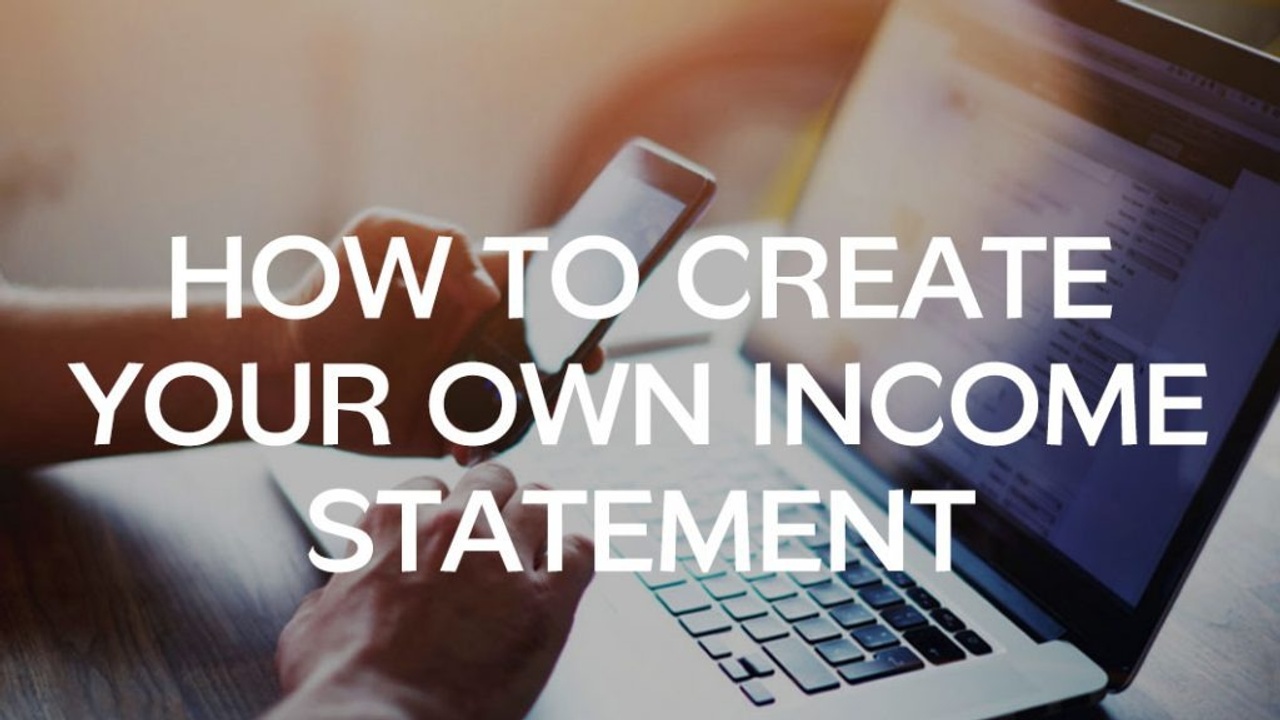
How To Create Your Own Income Statement
Your life is your business! And your income statement and your balance sheet are the two wealth cooking measures that show you how successful you are in the money aspect of the business called your life.
These are the most important performance measures in your wealth kitchen for knowing what is happening to your money.

The income statement is also referred to as a profit and loss statement because it shows you whether you are making a profit or a loss in your life – every month, every year. A business needs to make a profit or it very quickly won’t exist anymore.
The only way a business makes a profit is by ensuring that the income coming in is more than the expenses going out. Your life is no different.
If you want to have Financial Freedom
you must make a profit in your life!
You find out where you are with your income statement.
The balance sheet shows whether your business – your wealth – is growing or shrinking. In nature, if something isn’t growing it’s dying.
A net worth that isn’t growing each and every month is a sign of a sick wealth kitchen and a loud shout to you that you need to change something.
The income statement and the balance sheet work together in your wealth cooking. The balance sheet either adds fuel to the income drawer or burns fuel in the expenses drawer depending on the size of your assets and liabilities.
The more assets you have on your balance sheet, the more income you have going into the income drawer – which means you can get more assets and make your wealth pot expand.
The more liabilities you have the bigger the outflows weighing down the expenses drawer – which means less income available to buy assets. If your liabilities drawer is overflowing your wealth contracts and shrinks. It’s as simple as that.
Now I’m going to share with you how to create your income statement.
Your income statement is an analysis of all your income and expenses. This is the dynamic, fluid part of your pantry with regular flows of cash in and cash out – that is why it is also sometimes called a cash flow statement. This is not your spending plan (more on that in another article), this is the tool which shows you how money is moving through your life.
It’s time for you to roll up your sleeves, put on your wealth chef apron, and start getting your wealth pantry sorted out. I realise that for some of you this may seem as enjoyable as having your teeth pulled. I also know some of you will be tempted to skip this. If you don’t feel like doing this… then that is exactly why you must do it.
Please also avoid the tendency to try and make the numbers look better than they really are. This is your tool. If you try to skew the numbers you are just fooling yourself. Nobody else needs to even see these. Be completely honest about your current spending.
In The Wealth Chef book you will find a template for your Income Statement and at the back of the book is a code for you to get all your wealth cooking tools in electronic format.
Start With The Income
Get together your last three months of financial records.
Add up all the sources of income in your life. This includes your pre-tax monthly employment income, income from investment properties, income from royalties, interest from bank accounts, dividends from equities, child maintenance support, child benefits if you are fortunate enough to live in a country that provides these, pension or annuity income, and so on.
Add up the income from the last three months in each of these categories and divide by three to get a monthly average. We are trying to establish an accurate record of your average monthly income so consider all your money sources. Although we are starting with just three months’ records of, you may find it easier to have a look at the last year’s income and divide by 12.
Our aim as wealth chefs is to be as realistic as possible, so please don’t over-estimate year-end bonuses or inheritances you think you may get. Rather leave these out of your income statement for now – if they do arrive you have a great additional sum to add straight into your asset drawer.
Add these all up and this total is your monthly income drawer total.
Now Your Expenses!
Get out a big torch and shine that light into the dark scary place many people don’t want to look (or kid themselves about).
A lot of people find this the hardest drawer to calculate because most people haven’t a clue where their money is going. If you currently don’t have any money management system, I recommend you get your last three months’ bank statements and use these to start listing your expenses. Most banks have online banking where you can download these in a format to pull straight into a spreadsheet.
Categorise each and every expense. I recommend you create 10 to 15 spending categories – such as food, travel, entertainment, car maintenance, pets, insurance, utilities, bank fees, etc – and put each expense into one of these categories.
The income statement spreadsheet in The Wealth Chef book lists some category examples but please feel free to use your own.
A spreadsheet is the simplest way to do this. You must be specific. You can’t just put “credit card – 2,000.” You must itemise each expense on your credit card statement into one of your categories.
Remember to include any direct debits / debit orders / standing orders you have that go straight off your bank account or directly off your salary. These include pension contributions, medical aid / insurance contributions, investment contributions, insurance premiums, etc.
You must also include income tax. Remember, in the income portion of your income statement we added up your pretax earnings. So in your expenses you need to include the tax you pay. After all, for most people, this will be one of their biggest expenses.
Add up the expenses in each category over the past three months and divide by three to get a monthly average.
Also add any lump-sum expenses you pay annually that are not on your last three months bank statement. Divide these by 12 so you get an amount per month.
Take the time now to do this properly. You are setting up your wealth cooking foundation and the time spent now to get your wealth kitchen organised will reap benefits for the rest of your life. So as painful as this may feel, do it right.
Add up all your expenses from all the categories you created and this is the current total of your expense drawer.
When you first do this you may find your expenses total is smaller than your income total.
Before you start celebrating and rush out to spend the difference, don’t get too excited.
Although the surplus may look real on paper the money is gone if it isn’t in your bank account. If you are not yet tracking your expenses you might have a lot of cash withdrawals and have no idea where that money went. For now, just add a cash row to your expense sheet and put that amount in there.
You and your family must brainstorm those sneaky missing expenses and estimate what that cash has been spent on. These are the rats in your wealth pantry that gnaw away at your wealth.
As you start tracking your expenses and get better at managing your money your goal will be for every bit of it to be accounted for.
If you can’t account for 5%-10% of your expenses at the moment, you are doing relatively well and have a pretty accurate analysis of where your money is going. Even so, you want to get the miscellaneous amount down to less than 5% of your spending.
If it is any more than that, then you need to urgently get a grip on what you are doing with your money and implement a tracking system.
Are You Creating a Profit or a Loss?
Subtract your total expenses from your total income. This tells you immediately if you are creating or consuming wealth.
By the time you have mastered the Wealth Chef recipes you will know how to reduce your expenditure and increase your quality of life at the same time, how to increase your investment contributions so your asset pot gets bigger more quickly, and how to get yourself debt-free and well on your way to financial freedom – with a big fat healthy wealth feast supporting you.
You can get all the Recipes for Wealth and all your Wealth Cooking Tools in The Wealth Chef book plus you will get the Wealth Chef’s 30 Day Money Money Makeover free too – get your copy today.




